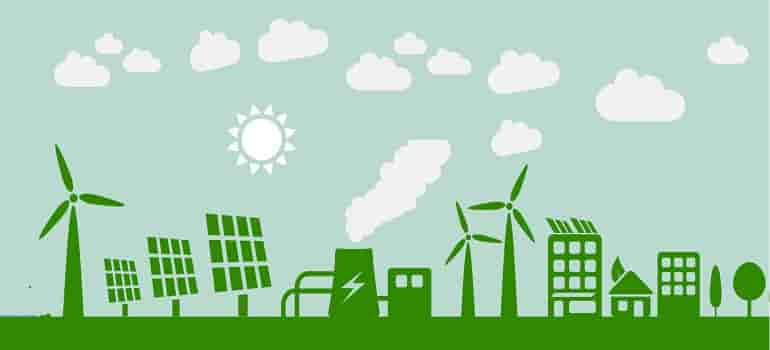
According to a new report from the house of International Renewable Energy Agency (IRENA) and Climate Policy Initiative (CPI), Global renewable energy investment increased between 2013 and 2018, reaching its peak at USD 351 billion in 2017.
The Global Landscape of Renewable Energy Finance 2020 edition highlights that while a cumulative USD 1.8 trillion were invested during the five-year period, the amount falls short to achieve the global climate commitments.
Renewable energy investment slightly declined in 2018, with modest growth through 2019. Although this was largely due to the decreasing costs of renewables, the total installed capacity continued to grow. The current level of investment is still insufficient however to keep the rise in global temperatures within the 1.5°C objective by mid-century.
To achieve this climate goal, investment in diverse renewables technologies must almost triple annually to USD 800 billion by 2050.
Ambitious commitments from governments are needed, backed by supporting measures such as moving subsidies away from fossil fuels.
Further investments are also needed in system integration and enabling technologies that increase system flexibility such as batteries and energy storage.
To that end, policies that enable the integration of new renewables capacity additions into the energy systems are needed, leading to their decarbonisation and bringing wide socio-economic benefits.
“The investment trend in renewable energy before COVID-19 was a positive one,” said Francesco La Camera, IRENA’s Director-General.
Camera added “But COVID-19 has shown us that much more effort is urgently needed to put us on a climate compatible pathway and help us recover better with a sustainable, resilient economy. Decision makers must design systemic approaches to policies that encourage and speed up the flow of investment into renewables, and away from fossil fuels, and doing so enable economic growth, social resilience and welfare.”
IRENA’s post-COVID agenda showed that average annual investments of USD 2 trillion in renewables and other energy transition-related technologies in the 2021-2023-recovery phase could create 5.5 million additional jobs in the sector.
An additional 19 million energy transition-related jobs would be created by 2030, following average annual investments of USD 4.5 trillion up to 2030.
The majority of these investments could come from private sources, if government funds are used strategically to nudge investment decisions and financing in the right direction. The capital is available, with a push from the governments to mobilise it.
Public funds are able to leverage private investments by a factor of 3 to 4 if used strategically to steer investments toward clean energy solutions and away from fossil fuels. Greater participation of institutional investors – which hold about USD 87 trillion in assets – will help to reach the scale of global investment needed.
To this end, it is key to promote the use of capital market solutions, such as green bonds, that address the needs of these investors.
The potential role of institutional investors for the global energy transition is further explored in IRENA’s report, Mobilising Institutional Capital for Renewable Energy, published this month.
“There is a very clear need for a rapid increase of investment in renewable energy coupled with a significant reduction and redirection of investment away from fossil fuel energy,” said Dr Barbara Buchner, CPI’s Global Managing Director.
“We call for more effort and coordination among policy makers, public and private finance institutions, energy and non-energy producing corporations, and institutional investors to speed up the global energy transition. This action is fundamental to a more sustainable and resilient future,” added Buchner.
This year’s joint report analyses for the first time financial commitments to off-grid renewables technologies in developing markets, as they can bring the world closer to achieving Sustainable Development Goal 7 on universal access to affordable, reliable, sustainable and modern energy by 2030.
Providing cost-effective energy solutions, off-grid renewables are essential in a time when energy access is crucial to power healthcare facilities, save lives and create jobs.
While investments in off-grid renewables solutions kept growing, reaching an all-time-high USD 460 million in 2019, additional capital must be unlocked especially for income-generating activities and productive uses to improve the livelihoods and resilience of billions of women and men globally and to promote socio-economic benefits.
Looking ahead, policy makers need to signal long-term political commitment and enhance partnerships with the private sector to boost investors’ confidence and attract additional private capital in the sector.
To that effect, the report laid out five specific recommendations that policy makers should implement to engage private sector actors, including institutional investors, capital market players and non-energy producing companies, in the collective path to green recovery and climate objectives.

